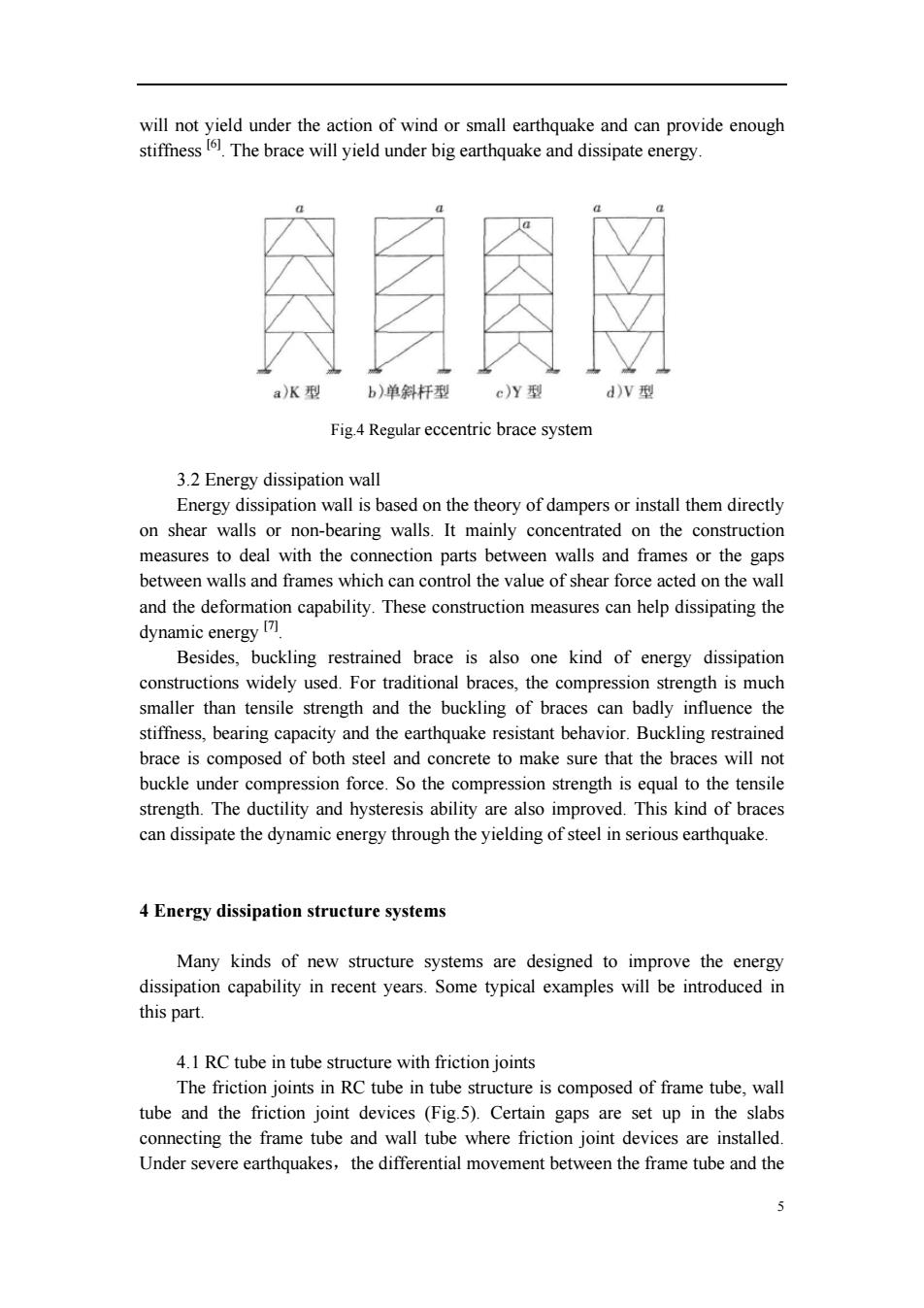正在加载图片...

will not yield under the action of wind or small earthquake and can provide enough stiffess The brace will yield under big earthquake and dissipate energy 肉 b)单斜杆型 Fig4 Regular eccentric brace system 3.2 Energy dissipation wall Energy dissipation wall is based on the theory of dampers or install them directly on shear walls or non-bearing walls.It mainly concentrated on the construction measures to deal with the connection parts between walls and frames or the gaps between walls and frames which can control the value of shear force acted on the wall and the deformation capability.These measures can help dissipating the dynamic energy忉 Besides,buckling restrained brace is also one kind of energy dissipation widelyused.For traditional braces,the strength is much smaller than tensile strength and the buckling of braces can badly influence the stiffness,bearing capacity and the earthquake resistant behavior.Buckling restrained brace is composed of both steel and concrete to make sure that the braces will not buckle under compression force.So the compression strength is equal to the tensile strength.The ductility and hysteresis ability are also improved.This kind of braces can dissipate the dynamic energy through the yielding of steel in serious earthquake. 4 Energy dissipation structure systems Many kinds of new structure systems are designed to improve the energy dissipation capability in recent years.Some typical examples will be introduced in this part. 4.1 RC tube in tube structure with friction joints The friction joints in RC tube in tube structure is composed of frame tube,wall tube and the friction joint devices (Fig5).Certain gaps are set up in the slabs conectin the frame tub and wall tube ewhere friction joint devices are installed Under severe earthquakes,the differential movement between the frame tube and the 5 will not yield under the action of wind or small earthquake and can provide enough stiffness [6]. The brace will yield under big earthquake and dissipate energy. Fig.4 Regular eccentric brace system 3.2 Energy dissipation wall Energy dissipation wall is based on the theory of dampers or install them directly on shear walls or non-bearing walls. It mainly concentrated on the construction measures to deal with the connection parts between walls and frames or the gaps between walls and frames which can control the value of shear force acted on the wall and the deformation capability. These construction measures can help dissipating the dynamic energy [7]. Besides, buckling restrained brace is also one kind of energy dissipation constructions widely used. For traditional braces, the compression strength is much smaller than tensile strength and the buckling of braces can badly influence the stiffness, bearing capacity and the earthquake resistant behavior. Buckling restrained brace is composed of both steel and concrete to make sure that the braces will not buckle under compression force. So the compression strength is equal to the tensile strength. The ductility and hysteresis ability are also improved. This kind of braces can dissipate the dynamic energy through the yielding of steel in serious earthquake. 4 Energy dissipation structure systems Many kinds of new structure systems are designed to improve the energy dissipation capability in recent years. Some typical examples will be introduced in this part. 4.1 RC tube in tube structure with friction joints The friction joints in RC tube in tube structure is composed of frame tube, wall tube and the friction joint devices (Fig.5). Certain gaps are set up in the slabs connecting the frame tube and wall tube where friction joint devices are installed. Under severe earthquakes,the differential movement between the frame tube and the